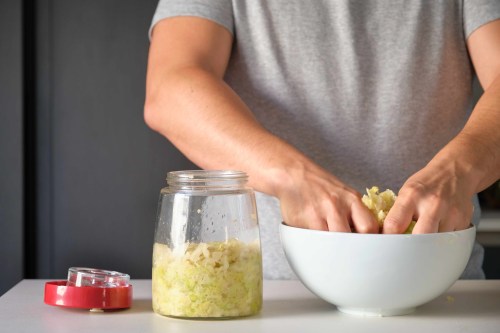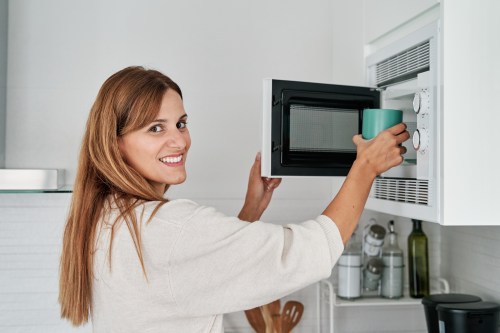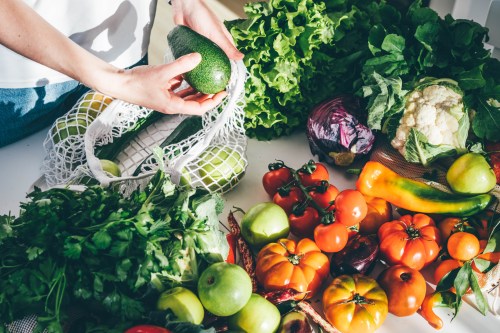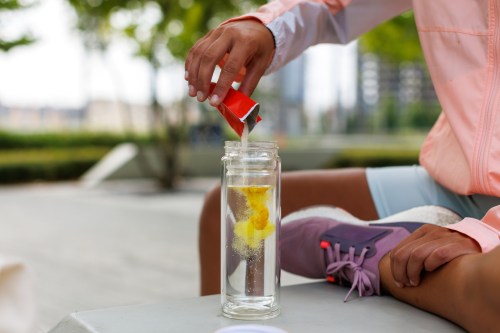Our editors independently select these products. Making a purchase through our links may earn Well+Good a commission
‘I’m a Food Scientist, and This Is How To Make the Perfect Cup of Coffee’
For a scientific approach to making a perfect cup of coffee, we turned to the owner of an an award-winning roastery and a food scientist.

Making a perfect cup of coffee is easy enough if you know what you’re doing. The taste and mouthfeel of every cup is affected by the beans, the roast, and even the water quality. And if there’s anyone who knows what they’re doing, it’s a food scientist. “There’s definitely a rabbit-hole of coffee science to explore,” says food scientist and chef Makenzie Bryson Jackson, MS.
Experts in This Article
food scientist and product development manager at Panaceutics
registered dietitian and author of The Better Period Food Solution.
According to Jackson and Kaleena Teoh, co-founder of Coffee Project NY, an award-winning coffee brand, roastery, and training center, there are a handful of simple tips that allow you to make barista-level coffee in the comfort of your own kitchen. Here’s what to keep in mind the next time you’re brewing yourself a pot.
How to make a perfect cup of coffee at home
1. Choose the right beans
If you’re not choosing high-quality beans, your coffee isn’t going to taste good. It’s as simple as that. “Bean selection is the most important part of a good cup of coffee. Hands down,” says Jackson. And there are two main species you should know: “There’s Robusta, which has low acidity and high bitterness, and Arabica beans, which are less bitter and often more flavorful,” she says. “Knowing how old the beans are, where they were grown, and how they were handled and stored is important as well.”
To find the best quality beans, Teoh recommends shopping from local roasters who roast fresh weekly, but don’t use them just yet. “Let the coffee rest for three to five days after roast before you consume them,” she says. “During the resting period, your coffee will release carbon dioxide and brewing after degassing will ensure better extraction.”
2. Consider the roast
The roast plays a big role in how your coffee ends up tasting, too. “The roasting process initiates one of the most magical reactions in food science: Maillard browning,” says Jackson. “This reaction brings out the delicious caramelized complex coffee flavor and aroma, but too much browning will definitely increase bitterness.”
When choosing a roast, you’ll see there’s a range from light to dark. The key with this is knowing your preference. “Do you like a lighter roast that highlights the floral, fruity, more delicate notes in the coffee or a darker roast that highlights the chocolate, nutty sometimes smokey notes in coffee?” Teoh says. “Or maybe you prefer a medium roast that preserves the balance of floral, fruity and chocolatey, caramelly notes.”
According to Jackson, the lighter the coffee, the fruitier and more acidic it will be. And when you choose a darker roast, the beans are more bitter—but the flavors are more complex. “A medium roast is a good place to start with a nice balance and a bittersweet finish, but it’s good to try a range of roasts to find what your unique palate likes best,” she says.
3. Rethink your storage
Where and how you’re storing your coffee beans can make or break how it’s going to taste once you brew it. “Your coffee should be stored in an airtight vessel with no light exposure,” says Jackson. And the reason behind that? Both can cause your beans to go bad… very quickly. And no one wants to start their morning with a stale cup of coffee. Try this airtight container from Airscape ($31).
The benefits of coffee, explained by a dietitian:
4. Grind your beans correctly
When you’re grinding your own coffee beans, Jackson says to make sure the grind is uniform. “A burr grinder is typically best for this,” she says. “The blade grinders don’t uniformly break the beans up, so you’ll have small dust-sized particles and larger bean bits.”
In addition to the grind size being uniform, the size also has to be just right, not too fine or not too coarse. “When it is grind too fine, we will tend to over extract the coffee and get a bitter aftertaste,” Teoh says. “If it is too coarse, we will tend to under extract the coffee and end up with a cup that is too high in acidity. A good grind size for drip coffee is between table salt and sea salt.”
Also, make sure you’re not grinding your beans too far in advance of brewing. “This will alter the flavor of your coffee, as you’ve exposed more surface area of the bean to oxygen,” Jackson says.
5. Check your water quality
While Jackson says water quality is lower on the list of priorities when making a cup of coffee, it’s still something to consider if you want to take your brew to the next level. “There are research scientists who have studied this—legitimately. I could nerd out here,” says Jackson. “The hardness of your water will affect the coffee’s flavor; a harder water has more minerals, which may increase the bitter perception of the coffee. I use distilled water when I brew coffee.”
6. Decide on a water ratio
It’s also important to decide your ideal water ratio, which comes down to how strong you like your coffee. “If you prefer a stronger coffee, go with a 1:15 coffee to water ratio,” Teoh says of the ideal coffee to water ratio in ounces. “If you prefer a less intense cup, go with a 1:18 or 1:19 ratio.”
7. Be aware of water temperature
When you’re brewing, you don’t want your water to be too hot or too cold. “If the water is over 205°F, your coffee will be prone to over-extract and be bitter and harsh. If it’s under 195°F, it will make it more difficult to extract, leaving you with sour flat coffee,” says Jackson. “This isn’t a hard and fast rule, but general guidelines.”
So a water temperature of 200°F is the sweet spot, Teoh adds. If you don’t have a thermometer to check the precise temperature, as long as the water is boiled, she says you should be good to go.
8. Choose your brewing method
There are many different coffee brewing methods available, such as French press, which “saves time and gives you a heavier body cup of coffee,” Teoh says. There’s also the drip pour over method. “It highlights the acidity in the coffee and gives you a cleaner cup. It’s easy to use but requires a little more skill.” And there’s the more detailed espresso brewing method “that involves pressure pushing water through the compact coffee puck, resulting in a small but intense cup of flavor.”
According to Teoh, there is no one best brewing method. It comes down to personal preference. “I would suggest thinking about your lifestyle: When do you drink coffee? How much time do you have to make coffee? What do you enjoy drinking?” Teoh says. “There are manual and automatic brewers in the market that can meet your needs at different price points.” Select a brewer that is compatible with your lifestyle.
9. Pay attention to brew time
Brew time, meaning how long it takes for the coffee to complete brewing, is another thing to keep in mind. Teoh says each device and brewing method has a suggested brew time and advises keeping the brew time within the recommended range by adjusting the grind size.
Another pro tip: When brewing the perfect cup of coffee, Teoh says to ensure the coffee grounds are evenly wet and liquid is drawing down at a slow and steady pace.
10. Adjust the recipe to your liking
Your version of the perfect cup of coffee may differ from someone else’s, so you won’t know the best recipe for you until you actually taste it, Teoh says. Her advice: Make one brew at a time and taste it. If it’s not quite right, adjust the recipe and brew another cup and repeat until you have the perfect cup. Each time you do, Teoh recommends changing only one factor at a time so you know exactly what contributed to the change in flavor and can replicate it again later. With these tips, you may never want to order coffee elsewhere ever again
Here’s how to make creamy dairy-free coffee:
Sign Up for Our Daily Newsletter
Get all the latest in wellness, trends, food, fitness, beauty, and more delivered right to your inbox.
Got it, you've been added to our email list.









